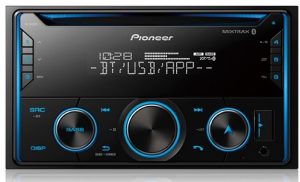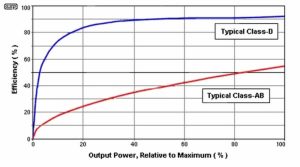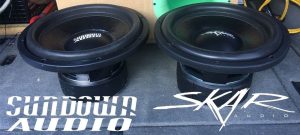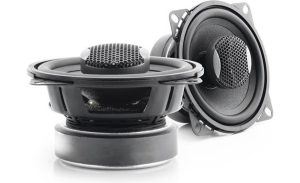Calculating subwoofer displacement is a crucial step in designing and building an effective audio system. Whether you’re an audio enthusiast or a professional installer, understanding the volume your subwoofer occupies can significantly impact the sound quality and performance of your setup. This guide will walk you through the essential concepts, tools, and steps needed to accurately measure and calculate subwoofer displacement. By the end, you’ll not only have a clear understanding of the process but also learn how precise calculations can save you money in the long run.
Contents
- Understanding Subwoofer Displacement Basics
- Importance of Accurate Volume Calculations
- Essential Tools for Measuring Displacement
- Step-by-Step Guide to Volume Calculation
- Calculating Box Volume for Accurate Results
- Measuring Cone Volume for Precise Displacement
- Accounting for Surround and Spider Materials
- Tips to Minimize Calculation Errors
- Common Mistakes and How to Avoid Them
- Saving Money with Accurate Displacement Calculations
Understanding Subwoofer Displacement Basics
Subwoofer displacement refers to the volume of space that the subwoofer occupies within an enclosure. This volume is crucial because it affects the overall performance of the subwoofer, including its efficiency and frequency response. When designing a subwoofer enclosure, it’s essential to account for the displacement to ensure that the internal volume is adequate for the desired sound output. Displacement is typically measured in cubic inches or liters, and understanding this concept is the first step toward building a high-performance audio system.
In essence, subwoofer displacement includes not only the physical space taken up by the subwoofer’s basket and magnet but also the space occupied by the cone when it moves. This movement, known as excursion, can significantly impact the volume calculations. Therefore, understanding how displacement affects the internal volume of an enclosure is critical. This knowledge helps in designing an enclosure that maximizes the subwoofer’s potential, leading to better sound quality and performance.
Importance of Accurate Volume Calculations
Accurate volume calculations are vital because they ensure that the subwoofer operates within its optimal parameters. When the subwoofer’s displacement is not correctly accounted for, it can lead to an enclosure that is either too small or too large. An undersized enclosure can restrict the subwoofer’s movement, causing distortion and poor sound quality. Conversely, an oversized enclosure may not provide the necessary support for the subwoofer, resulting in a lack of bass response and efficiency.
Moreover, precise volume calculations can prevent potential damage to the subwoofer. Operating a subwoofer in an improperly sized enclosure can lead to mechanical failures, such as a damaged cone or voice coil. By ensuring accurate volume calculations, you not only enhance the performance of your audio system but also protect your investment. In the long run, this attention to detail can save you money by reducing the need for repairs or replacements.
Essential Tools for Measuring Displacement
To accurately measure subwoofer displacement, you’ll need a few essential tools. A tape measure or digital caliper is necessary for measuring the physical dimensions of the subwoofer, such as the diameter of the cone and the depth of the basket. A calculator is also essential for performing the mathematical calculations needed to determine the displacement in cubic inches or liters.
In addition to these basic tools, having access to the subwoofer’s specifications, such as the Thiele/Small parameters, can be extremely helpful. These specifications often provide valuable information about the subwoofer’s excursion capabilities, which can aid in calculating the displacement more precisely. By gathering these tools and information, you’ll be well-equipped to embark on the process of measuring and calculating subwoofer displacement accurately.
Step-by-Step Guide to Volume Calculation
Calculating subwoofer displacement begins with measuring the physical dimensions of the subwoofer. Start by measuring the diameter of the subwoofer’s cone. This measurement should be taken from the outer edges of the cone. Next, measure the depth of the basket, which is the distance from the front of the cone to the back of the magnet. With these measurements in hand, you can calculate the volume of the cone using the formula for the volume of a cylinder: V = πr2h, where r is the radius, and h is the height.
After calculating the cone’s volume, consider the subwoofer’s excursion, which is the additional space needed for the cone’s movement. This value can often be found in the subwoofer’s specifications. Add this volume to the volume of the cone to get the total displacement. This step-by-step process ensures that you have accounted for all aspects of the subwoofer’s displacement, leading to more accurate results when designing the enclosure.
Calculating Box Volume for Accurate Results
Once you have determined the subwoofer’s displacement, it’s time to calculate the box volume. Start by deciding on the type of enclosure you want to build, whether it’s sealed, ported, or bandpass. Each type of enclosure has different volume requirements, so understanding these differences is crucial. Measure the internal dimensions of the enclosure, including the width, height, and depth, and multiply these measurements to determine the total internal volume.
It’s essential to subtract the subwoofer displacement from the total internal volume to ensure the enclosure is the correct size. This step is crucial for achieving the desired sound quality and performance. By accurately calculating the box volume and accounting for subwoofer displacement, you can build an enclosure that perfectly complements your subwoofer, resulting in a more efficient and powerful audio system.
Measuring Cone Volume for Precise Displacement
Measuring the cone volume is a critical part of calculating subwoofer displacement. The cone’s volume can be thought of as a cylinder, and you can use the formula V = πr2h to calculate it. Begin by measuring the diameter of the cone and dividing it by two to get the radius. Then, measure the height of the cone from the base to the peak. These measurements will allow you to calculate the cone’s volume accurately.
Keep in mind that the cone’s volume is just one component of the subwoofer’s total displacement. You must also account for other elements, such as the surround and spider, which contribute to the overall volume. By focusing on precise measurements and calculations, you can ensure that your subwoofer enclosure is perfectly tailored to your subwoofer’s specifications, leading to optimal performance.
Accounting for Surround and Spider Materials
When calculating subwoofer displacement, it’s essential to account for the materials used in the surround and spider. These components add to the overall volume the subwoofer occupies, and neglecting them can lead to inaccurate calculations. The surround is the flexible edge of the cone that allows it to move, while the spider is the component that helps center the voice coil and cone within the basket.
To account for these materials, measure their dimensions and add their volumes to the total subwoofer displacement. This step ensures that all elements contributing to the subwoofer’s physical presence are considered. By accounting for the surround and spider, you can achieve a more precise calculation of displacement, leading to a better-designed enclosure and improved sound quality.
Tips to Minimize Calculation Errors
Minimizing calculation errors is crucial when determining subwoofer displacement. One effective way to reduce errors is to double-check all measurements and calculations. Take your time to measure each component accurately and verify the results with a calculator. Additionally, consult the subwoofer’s specifications for any information that can aid in the calculations.
Another helpful tip is to use software tools or online calculators specifically designed for subwoofer displacement calculations. These tools can simplify the process and provide more accurate results by considering various factors, such as excursion and material thickness. By following these tips, you can minimize errors and ensure that your calculations are as precise as possible.
Common Mistakes and How to Avoid Them
One common mistake in calculating subwoofer displacement is neglecting to account for all components, such as the surround and spider. This oversight can lead to inaccurate volume calculations and an improperly sized enclosure. To avoid this mistake, ensure that you measure and include all elements contributing to the subwoofer’s displacement.
Another mistake is relying solely on estimated measurements instead of precise ones. This can result in incorrect calculations and a suboptimal enclosure design. Always use accurate measuring tools and verify your calculations to prevent this issue. By being thorough and attentive to detail, you can avoid common mistakes and achieve accurate displacement calculations.
Saving Money with Accurate Displacement Calculations
Accurate displacement calculations can save you money by preventing costly mistakes in enclosure design. By ensuring that your subwoofer operates within its optimal parameters, you reduce the risk of damage and the need for repairs or replacements. This attention to detail can extend the lifespan of your subwoofer and enhance its performance, ultimately saving you money in the long run.
Additionally, precise calculations can help you avoid unnecessary expenses when purchasing materials for your enclosure. By knowing the exact volume requirements, you can purchase the right amount of materials and avoid overspending. This efficiency not only saves money but also ensures that your audio system is designed to deliver the best possible sound quality.
In conclusion, understanding and accurately calculating subwoofer displacement is a vital step in building a high-performance audio system. By following the steps outlined in this guide, you can ensure that your subwoofer operates at its best, providing excellent sound quality and longevity. With the right tools and attention to detail, you can avoid common mistakes and save money by designing an enclosure tailored to your subwoofer’s needs. Embrace the process, and watch your audio system reach new heights of performance and efficiency.






